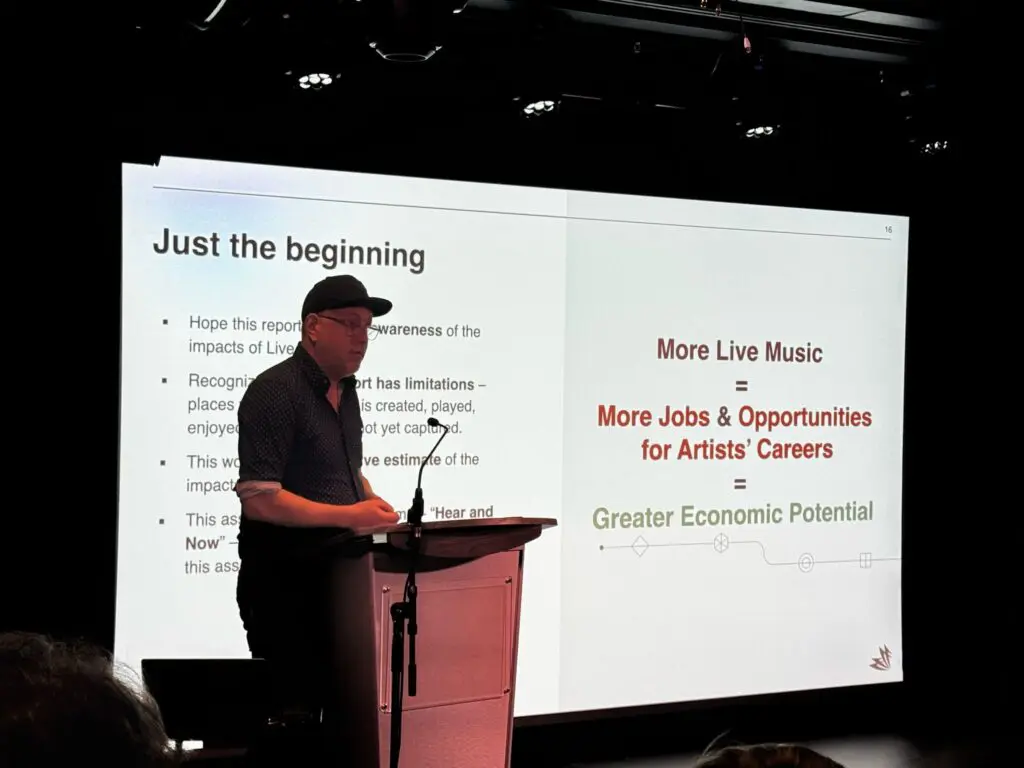Last month, thanks to the City of Hamilton’s Creative Industry and Cultural Department, our VP of Finance, Kelly, attended the Hear and Now in-person conference where the Canadian Live Music Association (CLMA) released the first-ever economic impact assessment of Canada’s live music industry. This study, led by Nordicity, sheds light on just how vital live music is—not just socially and culturally but economically as well.

For years, music lovers have understood the emotional and communal importance of live music. However, policymakers and economists have often overlooked its broader impact. This study aims to change that by providing hard data to demonstrate live music’s significant contributions to Canada’s economy.

Why this matters to our music community
In 2023, the study found that:
- Live music and tourism spending generated an economic impact of $10.92 billion.
- 101,604 jobs were supported across multiple industries, from artists and technicians to venue staff and service workers.
- 19.69 million visitors attended live music festivals and concerts nationwide.
- $3.73 billion in taxes was generated from live music operations and tourism.
- 18,945 live music shows were booked in Canada, averaging 50 shows per day across the country.
These numbers were achieved without any dedicated fiscal policy frameworks supporting the sector. Imagine the potential if governments and policymakers invested in live music infrastructure!
The economic ripple effect of live music is undeniable. It drives tourism, boosts local businesses, and creates jobs—not only for musicians but also for hospitality, retail, and transportation industries. When a city invests in its live music scene, it sees a return through thriving downtowns, higher tourism revenues, and increased social cohesion.
Our Takeaway

With tariffs reshaping trade, Hamilton has a unique opportunity to diversify beyond steel and forge new industries. This city was built by innovators, creators, and visionaries—and that same spirit can drive the growth of a world-class music and creative sector. It’s time to redefine what Hamilton is known for and build a future where industry and culture thrive together.
The Hear and Now study confirms what we’ve always believed: Live music is a powerful economic driver, not just a cultural asset. In Hamilton—home to Canada’s 6th largest cluster of music businesses—this presents a major opportunity.
In 2024, Hamilton allocated $7.6M to the City Enrichment Fund, including Arts & Culture—a small fraction of the city’s $1.07B budget, yet with massive returns. Cities that invest in culture don’t just survive—they become destinations.
Hamilton isn’t just a steel city—it’s a city of character, resilience, and creativity. With 7,725 music industry workers, we already have one of Canada’s strongest music scenes. With the right investment, we can solidify our place as a true music city.